04 June 2024 Daily Current Affairs
About Greedflation
It refers to a scenario where inflation in an economy is driven by corporate greed to make a profit rather than an increase in the cost of production, demand, or wages.
- What is Inflation?
- Inflation is the rate at which the general price level of goods and services rises in an economy. This can occur due to various factors, including:
- Cost-push inflation: Prices rise because input costs have increased. For example, a 10% overnight increase in crude oil prices due to supply disruption can lead to higher energy costs and thus higher overall prices.
- Demand-pull inflation: Prices rise because there is excess demand. For instance, if the Reserve Bank of India (RBI) cuts interest rates sharply, making loans more affordable, there could be a surge in demand for housing, leading to higher home prices.
- Other factors: Several internal and external factors can also contribute to inflation, such as supply-chain disruptions from international conflicts like the Russia-Ukraine war or crude oil price hikes by OPEC+.
- To combat inflation, central banks often raise interest rates to reduce overall demand in the economy.
- For example, the RBI may increase the repo rate, making loans more expensive and reducing the number of loan takers, thereby stabilizing demand.
- Causes of Greedflation:
- Unlike typical inflation scenarios where price increases result from higher input costs or increased demand, greedflation occurs when corporations exploit existing inflation by raising prices far beyond their actual input cost increases.
- This practice maximizes profit margins but also further fuels inflation, creating a cycle that exacerbates economic inequality.
- The impact of inequality on democratic processes:
- Many argue that inequality harms democratic processes by concentrating wealth and power in the hands of a few, undermining the principle of equal representation.
- However, some believe that a certain level of inequality can be beneficial as it incentivizes entrepreneurs to start businesses, driving economic growth and innovation.
While inequality can incentivize entrepreneurship, it often has detrimental effects on economic welfare and growth. Redistribution, if balanced with other policies, can enhance economic health by boosting consumption and investment.
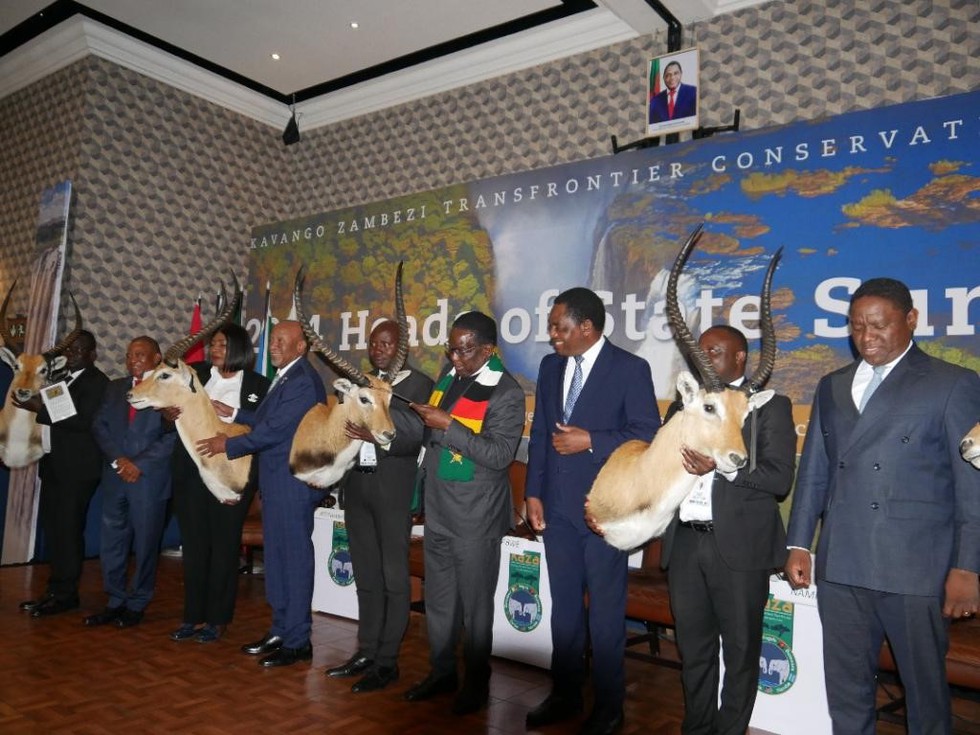
About CITES
- Convention on International Trade in Endangered Species of Wild Fauna and Flora (CITES) is an international agreement between 184 governments to ensure that international trade in wild animals and plants does not threaten the survival of the species.
- The convention entered into force in 1975. India has been a CITES Party since 1976.
- All import, export and re-export of species covered under CITES must be authorized through a permit system.
Appendix of CITES:
- Appendix I: Prohibits commercial trade of critically endangered species.
- Appendix II: Regulates trade to prevent over-exploitation.
- Appendix III: Protects species under national laws.
- Every two years, the Conference of the Parties (CoP), the supreme decision-making body of CITES, applies a set of biological and trade criteria to evaluate proposals from parties to decide if a species should be in Appendix I or II.
Ivory Trade:
- The ivory trade is the commercial trade in elephant ivory tusks and other ivory products.
- At least 20,000 African elephants are illegally killed for their tusks each year.
- The ivory trade threatens elephant survival, harms ecosystems, endangers local communities, and undermines security.
- The ivory trade has traditionally involved smuggling whole or partial elephant tusks from Africa to Asia, where they would be processed and carved into ivory products.
- The demand for ivory has been fueled primarily by a growing middle class in China, where ivory carving is a longstanding tradition.
Reasons Behind Advocating for Trade Ban Lift:
- Southern African leaders seek to lift CITES ivory ban for economic gain, citing $1 billion value. KAZA states hold a $1 billion ivory stockpile, with Zimbabwe's 166-ton stash worth $600 million.
About Postal Ballot
- It enables eligible voters to submit their votes via mail rather than personally visiting a polling place.
- This method provides a convenient option for individuals who are unable to participate in person due to various reasons.
- Eligibility criteria to vote using postal ballots:
- Service voters including members of the armed forces, paramilitary forces and government employees assigned to election duties away from their home
- Electors on election duty including government officials and polling staff working at polling stations outside their home areas.
- Electors under preventive detention orders during the election period can also avail themselves of this option.
- Individuals engaged in essential services on polling day like essential workers, including authorized media personnel and those in railways and healthcare, can vote via postal ballots in Lok Sabha and four state Assembly elections.
- Absentee voters: Those who are unable to vote in person due to work commitments, illness, or disability.
- The amendment in October 2019 to the Conduct of Election Rules, 1961, lowered the eligible age for senior citizens from 85 to 80 and permitted Persons with Disabilities (PwDs) to use postal ballots in the 2020 Delhi Assembly elections.
- What is the process of postal voting?
- It involves receiving a ballot kit from the Returning Officer, marking the chosen candidate(s) on the ballot paper within a secrecy sleeve, completing a declaration form, sealing the marked ballot and declaration in the secrecy sleeve, inserting it into a prepaid return envelope, affixing postage, and mailing it to the designated address before the deadline.
- Counting of postal ballots:
- Postal ballots are counted separately. On counting day, postal authorities bring them to the counting centre.
- Election officials verify their validity and add valid ballots to the candidates' vote counts.
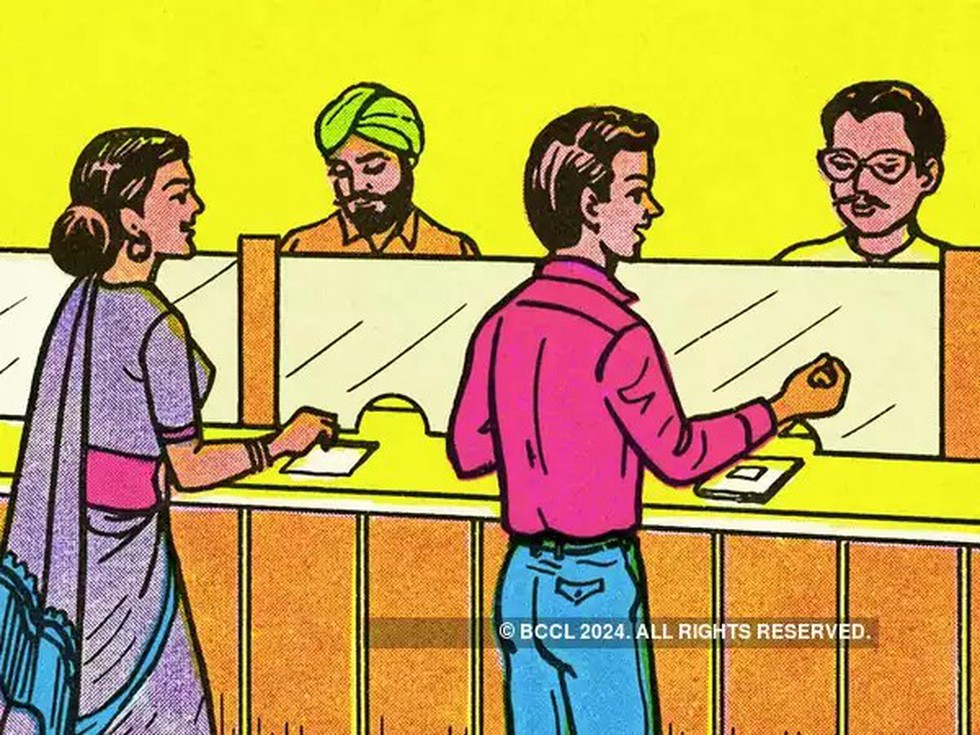
- About Bank Clinic:
- It is an initiative by the All India Bank Employees' Association (AIBEA), aims to assist bank customers with grievance redressal amid the rapid expansion of technology and Reserve Bank of India (RBI) guidelines on retail banking.
- It is a non-resolving advisory platform guiding customers on the remedies available per RBI guidelines.
- It serves as an additional channel alongside the normal Banking Ombudsman process.
- How does it work?
- Under this initiative, customers can register their complaints on the Bank Clinic website and within five working days, they will receive a reply detailing the available remedies and relevant RBI guidelines for their specific issue
- The goal is to ensure timely and effective redressal of customer issues.
- It guides customers on available remedies but does not directly resolve queries.
- Benefits:
- The Bank Clinic helps build goodwill with customers.
- It provides valuable feedback to banks, highlighting areas where service deficiencies exist.
- What is AIBEA?
- The All India Bank Employees Association (AIBEA) is a national trade union representing bank employees across India.
- Founded in 1946 on April 20th in Kolkata. It’s headquarter is in Chennai.
- AIBEA plays a crucial role in advocating for the rights, welfare and interests of bank workers.
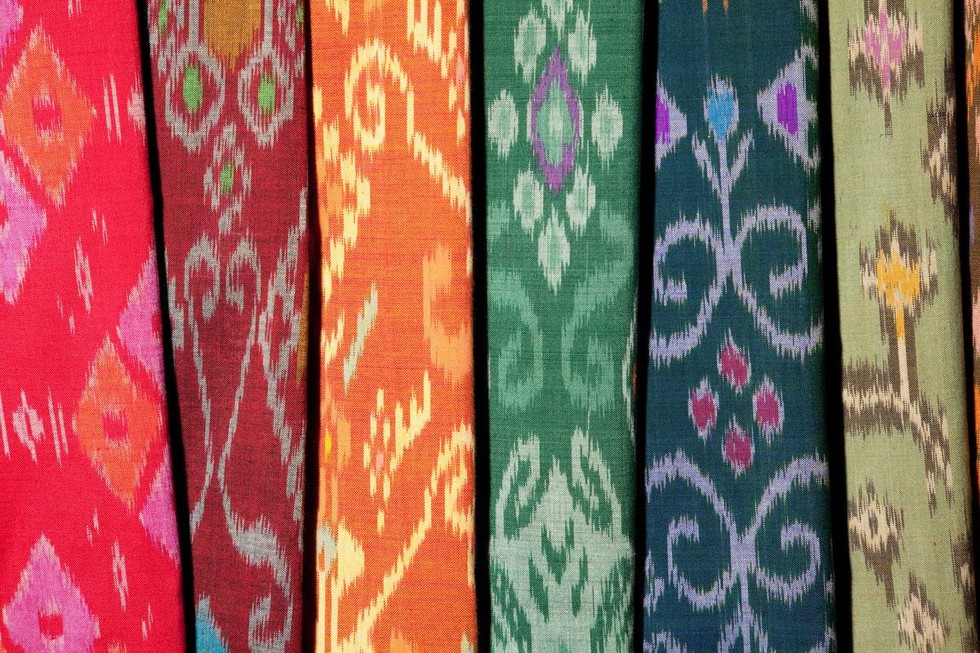
About Ikat design:
- Origin & Technique:
- Ikat originates from the Indonesian/Malay word 'mengikat', meaning to bind.
- It features a resist dyeing process where threads are dyed before weaving.
- The fabrics exhibit unique 'blurred' effects due to slight misalignments of threads.
- Historical references:
- Ancient references to ikat include the Buddhist 'Lalitavistara Sutra' and the Ajanta caves murals.
- These references mention 'Vichitra Patolaka', associated with the double ikat or patola of Gujarat.
- Types of Ikat:
- Single Ikat: Dyeing involves either the warp or the weft threads, simpler and quicker to produce.
- Double Ikat: Both warp and weft threads are intricately resist-dyed for precise alignment, known for their complexity.
- Key regions and GI tags:
- Patan's Patola from Gujarat is known for its double ikat and received a GI tag in 2013.
- Rajkot Patola, a simpler single ikat variant from Gujarat, also received a GI tag in 2013.
- Odisha's Bandha specialises in single ikat with GI-tagged styles like Sambalpuri Ikat (2010) and Bomkai (2009).
- Telangana's Telia Rumal is famous for its oil-treated threads that enhance colour depth and received a GI tag in 2020 and Pochampally Ikat is known for its geometric patterns and received a GI tag in 2005.

About Doctrine of Merger:
- It is a common law doctrine founded on the principle of maintenance of decorum and propriety in the functioning of courts and tribunals.
- The doctrine of merger provides that when an appellate court passes an order, the order passed by the lower court is merged with that order.
- The underlying logic is that there cannot be more than one decree or operative order governing the same subject matter at a given point of time.
- The doctrine solves the issue of which order must be enforced and given importance if there are multiple orders passed by both subordinate and superior courts on a single issue.
- It clarifies and provides that in this situation, the order passed by the superior court or the successive order would prevail and that the order of the lower court would be merged with the order passed by the superior court.
- The doctrine is not recognized statutorily but is a statement of judicial propriety and seeks to instill discipline in the functioning of subordinate adjudicating authorities, whether judicial, quasi-judicial, or administrative.
What is the Doctrine of Stare Decisis?
- The doctrine of Stare Decisis refers to the concept that courts must follow previously made judicial decisions in cases where the same legal issues are brought before them in subsequent matters.
- It means that courts refer to previous, similar legal issues to guide their decisions.
- Such previous decisions that courts refer to are known as “precedents”.
- Precedents are legal principles or rules that are created by the decisions given by courts.
- Such decisions become an authority or an example for the judges to decide similar legal cases/issues in the future.
- The doctrine of Stare Decisis creates an obligation on courts to refer to precedents when taking a certain decision.

About Spot Bellied Eagle Owl:
- It is also known as the forest eagle-owl, is a large bird of prey with a formidable appearance.
- Scientific Name: Ketupa nipalensis
- Distribution:
- It can be found in a variety of habitats, including tropical and subtropical forests, woodlands and savannas.
- It is commonly found in India, Sri Lanka, Nepal, Bhutan, Bangladesh and parts of Southeast Asia.
- Features:
- It is a large species of owl. It measures about 50 to 65 cm in length and weighs 1500 to 1700 grams.
- Its wingspan can reach up to 1.7 meters.
- The most distinguishing feature is its striking colouration. The upperparts of its body are a rich chocolate brown, speckled with white spots.
- The feathers on its wings and tail are barred with alternating shades of brown and white, creating a stunning pattern that helps it blend in with its surroundings.
- The underside of the owl is where it gets its name; its belly and breast are a light cream colour, covered in bold black spots.
- It is primarily nocturnal.
- It is an apex predator, feeding on a variety of prey, including rodents, small mammals, reptiles, and insects.
- It is a solitary bird that is territorial and maintains a home range.
- Conservation Status:
-
- IUCN Status: Least Concern
- Wildlife (Protection) Act, 1972: Schedule IV
- CITES: Appendix II.
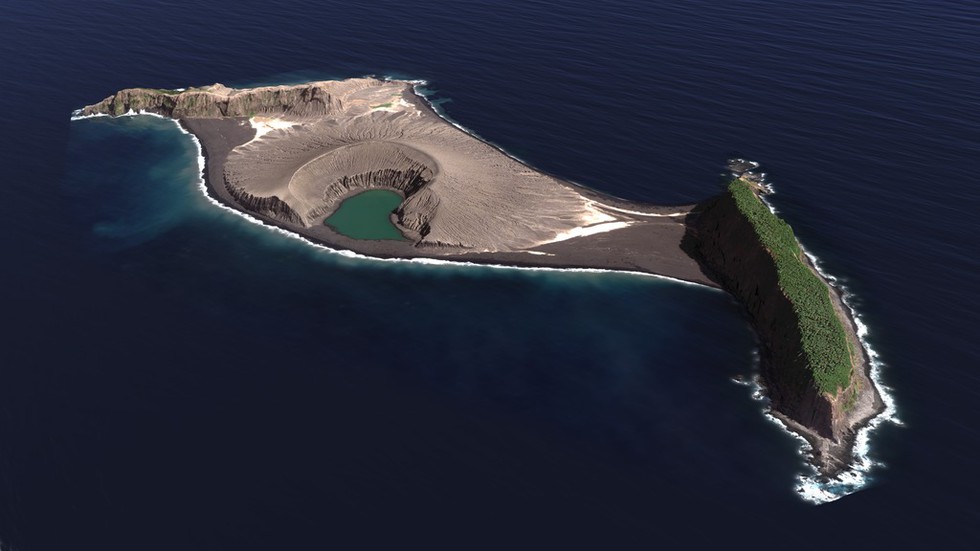
About Hunga Tonga–Hunga Haʻapai (HTHH):
- It is a submarine stratovolcano in the Tongan archipelago in the southern Pacific Ocean.
- The HTHH volcano includes the small islands of Hunga Tonga and Hunga Ha’apai, along with shallow reefs along the caldera rim of a much larger submarine edifice in the western South Pacific Ocean, west of the main inhabited islands in the Kingdom of Tonga.
- It is located about 30 km south of the submarine volcano of Fonuafoʻou and 65 km north of Tongatapu, the country's main island.
- The volcano is part of the highly active Tonga–Kermadec Islands volcanic arc, a subduction zone extending from New Zealand north-northeast to Fiji.
- The Tonga-Kermadec arc was formed as a result of the subduction of the Pacific Plate beneath the Indo-Australian Plate.
- It has erupted regularly over the past few decades.
What is a Stratovolcano?
- It is a tall, steep and cone-shapedtype of volcano.
- Unlike flat shield volcanoes, they have higher peaks.
- They are typically found above subduction zones, and they are often part of large volcanically active regions, such as the Ring of Fire that frames much of the Pacific Ocean.
- Stratovolcanoes comprise the largest percentage(~60%) of the Earth's individual volcanoes and most are characterized by eruptions of andesite and dacite, lavas that are cooler and more viscous than basalt.
- These more viscous lavas allow gas pressures to build up to high levels. Therefore, these volcanoes often suffer explosive eruptions.
- They are usually about half-half lava and pyroclastic material and the layering of these products gives them their other common name, composite volcanoes.
- At their peak, they usually have a small crater. The crater may be filled with water or ice, or it may contain a volcanic dome during a period of relative inactivity.
About Sunkoshi River:
- Sunkoshi, also known as the ‘river of gold', is a river in Nepal that is part of the Koshi or Saptakoshi River system formed by the seven (sapta) rivers joining in east-central Nepal.
- Course: River Sunkoshi’s water source is located in the Zhangzangbo Glacier in Tibet, which merges with River Saptkoshi, ultimately joining the Ganga in the Katihar district of Bihar in India, before finally draining into the ocean at the Bay of Bengal in Bangladesh.
- It is one of the longest and most popular rivers for rafting in Nepal and is known for its challenging rapids.
- It forms the watershed for most of eastern Nepal.
Key Facts about Koshi River:
- It is a transboundary river which flows through China, Nepal, and India.
- It is a prominent tributary of the Ganges.
- Course: Originating from the Tibetan Plateau, it crosses the Himalayas and flows through the Mahabharat range and Siwalik hills, reaching the plains of eastern Nepal and finally meeting the Ganges in Bihar, India.
- The Kosi drains an area of 74,500 sq.km, of which only 11,070 sq.km lie within Indian Territory. The Koshi River system drains about 45% of Nepal.
- The Kosi River valley is bounded by steep margins that disconnect it from the Yarlung Zangbo River to the north, the Mahananda River to the east, the Gandaki to the west, and the Ganga to the south.
- It is well known for its tendency to change course, generally in a westward direction. During the last 200 years, the river has shifted westwards for a distance of about 112 km and has laid waste large tracts of agricultural land.
- Kosi is known as the "sorrow of Bihar", as it has caused widespread human suffering in the past due to flooding and very frequent changes in course, when it flows from Nepal to Bihar.
- Tributaries: It has seven major tributaries: Sun Koshi, Tama Koshi or Tamba Koshi, Dudh Koshi, Indravati, Likhu, Arun and Tamore or Tamar.
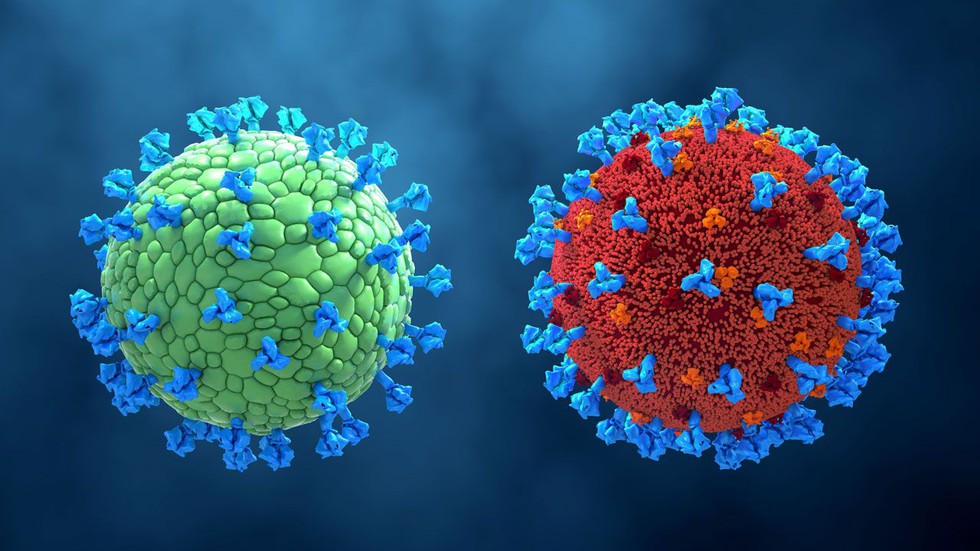
About Virus-like Particles (VLPs):
- VLPs are molecules that resemble viruses but lack infectivity because of the absence of viral genetic material.
- They are a very effective way of creating vaccines against diseases such as human papillomavirus (HPV), hepatitis B, malaria, and more.
- As they are very similar to real viral molecules, introducing a VLP into the body will trigger an immune response, but a person will not experience any symptoms of the virus they are being vaccinated against.
- Once the body has had an immune response to the VLP, it will recognize the virus and prevent infection in the future, giving people immunity to that particular virus.
- Structure:
- VLPs are very small, with a particle radius of approximately 20 to 200 nm. This means that they can easily enter the lymph nodes, where the immune system is activated in the case of an infection.
- A VLP consists of one or more structural proteins that can be arranged in multiple layers.
- They can also contain an outer lipid envelope, which is the outermost layer that covers a large number of different viruses. This outer layer protects the genetic material inside the virus particle.
- Creating a VLP vaccine can use bacterial, yeast, insect or mammalian cells.
- When used as a vaccine, VLPs cause a robust immunogenic response due to their high-density display of epitopes and the capacity to present multiple proteins to the immune system.
- Most recently, VLPs have been employed as nanomachines to deliver pharmaceutically active products to specific sites and into specific cells in the body.
Key Facts about Nipah Virus:
- Nipah virus (NiV) is a zoonotic virus (it is transmitted from animals to humans) and can also be transmitted through contaminated food or directly between people.
- In infected people, it causes a range of illnesses, from asymptomatic (subclinical) infection to acute respiratory illness and fatal encephalitis.
- The virus can also cause severe disease in animals, such as pigs, resulting in significant economic losses for farmers.
- It first broke out in Malaysia and Singapore in 1998 and 1999.
- Treatment:
- There are currently no drugs or vaccines specific for Nipah virus infection.
- Intensive supportive care is recommended to treat severe respiratory and neurologic complications.





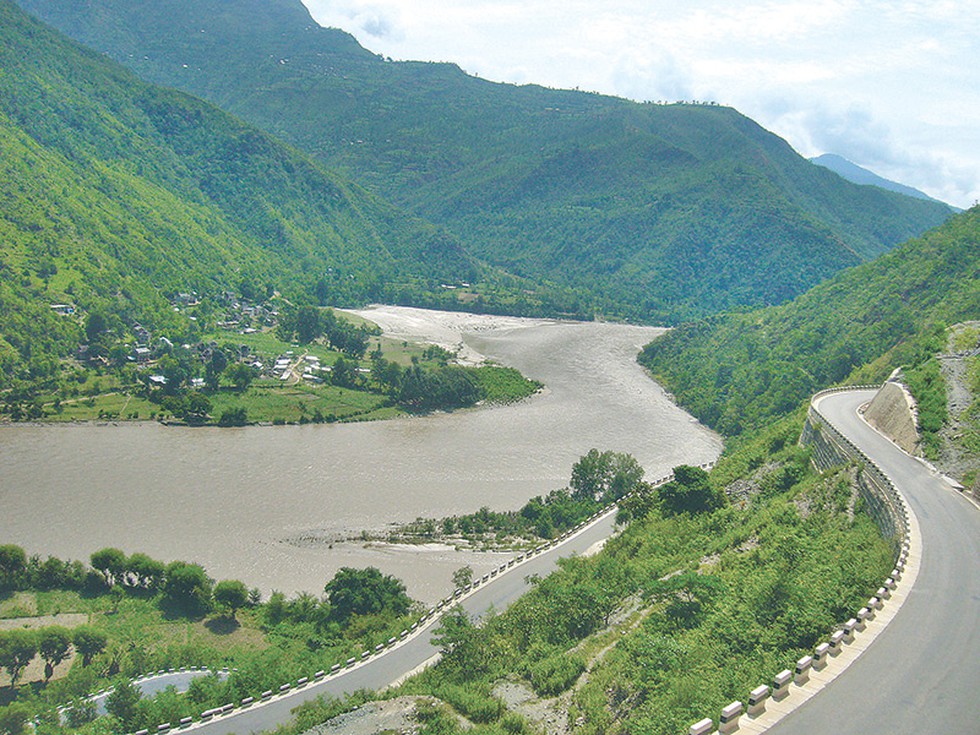























































































































































.png)
.png)
.png)
.png)
.png)


.png)
.png)
.png)





.png)
.png)






.png)
.png)
.png)
.png)
.png)
.png)
.png)
.png)
.png)

.png)







.png)
.png)


.png)
.png)
.png)


.png)

.png)
.png)





.jpg)

.png)
.png)


.png)

.png)
.png)
.png)

.jpg)

.jpg)


.png)

.png)
.png)
.png)
.png)
.png)
.png)
.png)
.png)
.png)
.png)




.png)

.png)





.png)
.png)
.png)
.png)
.png)
.png)
.png)
.png)
.png)
.png)
.jpg)
.jpg)

.png)
.png)
.png)
.png)
.png)
.png)
.png)
.png)
.png)
.png)
.png)
.png)
.png)
.png)
.png)
.png)
.png)
.png)
.png)
.png)
.png)
.png)



.png)
.png)

.jpg)
.jpg)


.jpg)
.jpg)
.jpg)
.jpg)
.jpg)

.jpg)








.jpg)
.jpg)
.jpg)
.jpg)
.jpg)

















.jpg)
.jpg)







.jpg)


















.jpg)
.jpg)






























































































.jpg)
.jpg)


























.jpg)

.jpg)










.jpg)








.jpg)




.jpg)










.jpg)


















.jpg)












































.jpg)














.jpg)
.jpg)
.jpg)





.jpg)

.jpg)
.jpg)





































































.jpg)


































.jpg)
.jpg)
















































.jpg)












.jpg)


.jpg)




.jpg)
.jpg)
.jpg)

.jpg)
.jpg)
.jpg)
.jpg)

.jpg)
.jpg)
.jpg)

.jpg)
.jpg)
.jpg)
.jpg)
.jpg)
.jpg)
.jpg)
.jpg)

.jpg)


.jpg)
.jpg)
.jpg)
.jpg)
.jpg)
.jpg)
.jpg)
.jpg)
.jpg)
.jpg)











.jpg)
.jpg)





.jpg)
.jpg)
.jpg)
























.jpg)
























.jpg)









.jpg)
.jpg)







.jpg)
.jpg)









































.jpg)
.jpg)
.jpg)
.jpg)
.jpg)

.jpg)
.jpg)
.jpg)
.jpg)
.jpg)


.jpg)
.jpg)
.jpg)
.jpg)
.jpg)

.jpg)
.jpg)
.jpg)
.jpg)
.jpg)
.jpg)
.jpg)
.jpg)
.jpg)
.jpg)
.png)

.png)
.png)

.png)
.png)
.png)
.png)


.jpg)
.jpg)

.jpg)
.jpg)
.jpg)

.png)
.png)
.png)
.png)
.png)
.png)
.png)

.png)
.png)
.png)
.png)
.png)
.png)
.png)
.png)
.png)
.png)





































































-min.png)



.png)




.png)








































